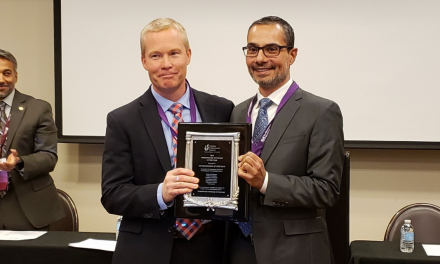
CVA and Cervical Manipulation

In the realm of risk management pertaining to the chiropractic profession, there is no subject that causes more concern to doctors than CVA and cervical manipulation. Although rare, when the CVA catastrophic event occurs in relation to the cervical manipulation, it causes a chain of events that will alter the lives of the doctor, their staff and of course, the patient. Can the event be predicted? Can a change in manipulative procedures avoid the occurrence? New research brings to light answers to these and many other questions.
Stroke affects more than 700,000 Americans annually. In the United States, stroke is the third leading cause of death, the major cause of disability and the primary reason for nursing home admission. In the general population, the incidence of stroke has been shown to occur at a rate of 2.6 cases per 100,000 persons. The annual incidence of spontaneous Vertebral artery dissections (VADs) in hospital settings has been estimated to occur at the rate of 1—1.5 per 100,000 patients.1The corresponding VAD incidence rate in community settings have been reported to be twice as high.2-3Recent studies conducted with Dr. John Triano, revealed that the incidence of vertebral artery dissections within one week after a cervical adjustment is approximately 1.3 per 100,000 patients in patients under 45 years of age and 1 per 500,000 cervical manipulations in the general population.4
The significance of dissection rates from cervical manipulation to the data of incidence in the general population, is best put in perspective by applying the Bradford Hill criteria. Sir Bradford Hill outlined a systematic approach to determine causation factors. In his approach, Sir Bradford Hill related whether an observed occurrence can be related to an actual causal connection. When applied to the data, the Bradford Hill criteria reveals that the incidence of vertebral artery dissection after cervical manipulation is of the same magnitude as that occurring in the general population. In other words, the incidence of vertebral artery dissection after manipulation does occur, however the relationship is not inherently different that that naturally occurring in the general population. Placing this into context demonstrates that CVAs attributable to spinal manipulation are equivalent to spontaneous rates for CVAs in the general populace due to everyday activities such as visiting a beauty parlor.
A large number of common lifestyle activities have been shown to be associated with cerebral ischemia or CVAs themselves. All are decidedly non-manipulative. By way of illustration, consider that activities such as dental procedures, backing up the car, roller coaster rides and yawning may also cause cerebral ischemia. Even more surprising, is that seemingly everyday activities such as star gazing, Tai Chi, overhead work and washing the hair at a beauty parlor, have been shown to cause strokes. Nonetheless, CVAs following cervical manipulation do occur. Furthermore, once they occur, our litigious society causes us to take note of the situation and take steps to reduce the incidence and more importantly, learn how to respond to such occurrence if they should occur.
If one looks at the course of the vertebral artery as it passes through the cervical spine, it has been shown that the majority of the vertebral artery dissections occur as the artery exits the transverse foramen in the axis. It is at this level that the artery abruptly turns from its upward direction to move in a lateral direction to reach the foramen in the atlas transverse process. The lateral turn is where the artery becomes especially vulnerable.
In an effort to determine the causative factors in cervical manipulation resulting in artery dissection, Haldeman and colleagues concluded that there is no evidence to assist the practitioner in identifying the mechanical trauma, neck movement or adjustive technique to cause the artery dissection or in identification of the patient at risk.
So when one studies the current research, there is evidence that indeed, vertebral artery dissection does occur, however there is no way to predict the occurrence based on the type of maneuver. So then how can it be prevented? What steps must the practitioner take if such an event occurs in your office? The answer ultimately comes down to clinical diagnosis based on patient history and examination.
Today’s chiropractic physician must be aware of the history presented by a patient with possible cervical artery disease (CAD) and the signs and symptoms found in their examination. Probably the most significant finding in the history of a patient with impending CAD would be a new or sudden onset of facial pain, head pain or headache, which the patient has never experienced prior to this event. Many patients will actually state “I have never had a headache like this before.” This type of headache seems to frequently affect the upper cervical spine and originate behind an ear. This is thought to be pain from an arterial dissection. The history may include a history such as trauma, recent infection, migraines or connective tissue disease. Signs and symptoms of vertebral artery ischemia would include symptoms such as visual problems, dizziness, dysarthria, dysphagia, nausea, numbness or nystagmus.
Despite careful consideration of the risk factors for vertebral artery dissection, if the catastrophy does occur, the action of the practitioner is of critical importance. In the last decade, thrombolytic therapy to dissolve the dissection’s thrombi has been shown to improve the complete recovery rate of the affected patient. The therapy must be administered within three hours of the onset. Therefore, the chiropractor’s recognition of the event and their actions are directly responsible for the patient’s recovery. The physician must take immediate steps to get the patient to the hospital as quickly as possible. When the call is made for emergency medical services, be prepared to inform the paramedics that you suspect a stroke, noting the time of the onset, the age of the patient and any known past medical history.
While awaiting the arrival of the EMS personnel, place the patient in a rescue and recovery position, take their vitals and check the pupils to make sure they are equal, accommodative and reactive to light (PEARL). Never re-adjust the cervical spine. To avoid possible aspiration, do not give the patient anything to eat or drink.
In summary, the doctor should be very suspicious if a patient presents with “severe” neck or headache pain which is unlike any prior episodes of head pain. The addition of any type of ataxia and/or problems with gait or other type of coordination problems would only add to the concern for such a symptom complex. Dizziness and vomiting are most certainly red-flag warning signs.
The actions the doctor takes in the first 5 minutes after a stroke will determine if the doctor is successful in decreasing the permanent residuals occurring after a VAD. In addition, if litigation attempts occur, the facts of the case may result in the physician being exonerated by the facts. In view of the recent research findings pertaining to CVA and cervical manipulation, it would be prudent for the chiropractic physician to thoroughly familiarize themselves with the history, signs and symptoms and necessary actions to yield a successful outcome in such a catastrophy. Any procedure in medicine carries inherent risks. If the physician acts accordingly, hopefully the incidence of CVA associated with cervical manipulation can be averted.
References
- Shievink WT, Mokri, B, O’Falion WM. Recurrent Spontaneous Cervical-artery Dissection, New England Journal of Medicine 1994; 330 (6): 393-397.
- Shievink WT, Mokri B, Whisnant JP. Internal Carotid Artery Dissection in a Community: Rochester, Minnesota, 1987-1992, Stroke 1993; 24 (11): 1678-1680.
- Giroud M, Fayolle H, Andre N, Dumas R, Becker F, Martin D, Baudoin N, Krause D. Incidence of Internal Carotid Artery Dissection in the Community of Dijon [Letter], J Neurol Neurosurg Psychiatry 1994; 57(11): 1443.
- Triano, John J. D.C., Ph.D., FCCS, (2005, September)Cervical Artery Disease – Fact, Fact, Fantasy and Evidence, Florida Chiropractic Association presentation. This report will also be available for download on the NCMIC website in late 2005.
- Dr. Mario Fucinari is a 1986 Palmer graduate. He is in full-time practice in Decatur, Illinois. Dr. Fucinari is a frequent lecturer for NCMIC and various state associations. He can be reached atchiro40dad@aol.comorCVA@AskMario.com


















